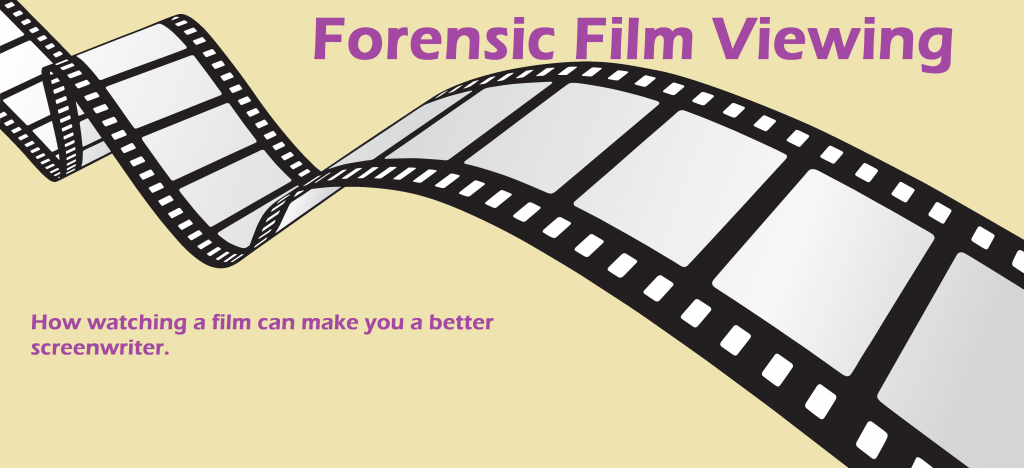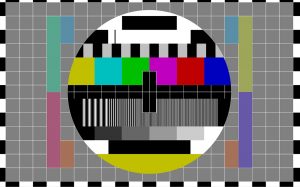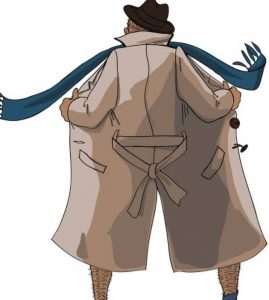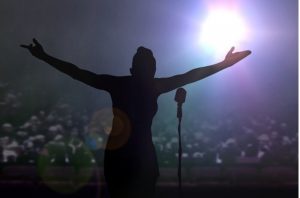Forensic Film Watching

Forensic Film Viewing isn’t really an industry term. It is just a way to explain in simple terms what I do and what I think you should try if you want to learn screenwriter by watching film.
So how do I Forensic Film View?
First you will need a paper and pen, or some way of recording your thoughts. You may think you can just remember everything as you experience it. But you will need to refer back to your notes during the viewing.
Pick a film you know reasonably well.
You can do it with any film, but it is easier the first time with something you know. So start streaming the film or press play on the DVD, whatever you do to get the movie started. Watch the opening scene. Then stop the movie. What did you learn as a viewer? Did we get a hint of character? Did we see the world? How were things revealed? Was there a surprise to make you question your understanding? Write a few sentences about the opening scene. Now repeat the process for the opening sequence, the first few scene. Collectively, what did you learn.
Characters in forensic film viewing
Let’s look at Die Hard as a great opening sequence. Opening scene, we see Bruce Willis on a plane and he is obviously scared of flying. Did that play into the rest of the film – no. But it was a great way of getting a conversation started with the passenger next to him. What do we learn from this and what does the scene achieve.
We learn he is a New York City cop. He is a tough guy and likes telling people. He is smug when the guy is freaked out about him carrying a gun. We see this tough guy carrying a big teddy bear and it is his carry on. So the bear is important to him. We see that anything that isn’t tough New York is foreign to him. He is amazed at the bright bubbly California. The conversation with his fellow passenger also gets him out of his shoes later on in the story, which is a major plot point. His clothing is also very New York cop, Jeans, Checked shirt, jacket while other people are in lighter summery clothing. These opening scenes show us he is a fish out of water in California, he belongs back in the tough streets of New York.
He is then picked up at the airport by a limo. He rides up front with the driver Argyle, again showing us that he is just a guy. They have a conversation about what bring him to California. This is a great exposition dump. Argyle is our proxy in this situation. He asks why are you here? Who are you? This conversation even let’s us know that Bruce has been faithful during the separation, when Argyle offers to set him us with some “Mumma Bears”. Everything we will need to know to move forward in the movie. Even how the relationship with his wife is currently sitting and why Bruce is there. Argyle even externalises that Bruce’s hoped for his wife’s failure and reconciliation. Showing that Bruce is not willing to comprise his identity as a tough New York City cop.
Now a lot of this was done with action and little dialogue. Plus it was done incrementally. We find out he is a cop, a bit more story, we learn about his amazement at California, we learn more about his life as a cop (incremental information), we learn that he is separated from his wife and his kids (the teddy bear now makes sense).
Power Dynamics in a scene.
Lets take a quick look at power dynamics in these scenes. We will stay with forensic film analysis if Die Hard. Bruce is scared, the other passenger has the upper hand being a better traveller than Bruce. The passenger sees the guy, freaks out a little, Bruce now has the upper hand and lets the guy know he is a cop. We are in the car now. He is riding up front, where he wants to ride, he has the upper hand again. Argyle is asking questions, a situation is he okay with. But he is reluctant to give any power to Argyle by answering them. He only answers when Argyle starts jokingly running him down “what did she beat you up or something”. He is compelled to get his power back by telling Argyle how tough he is and how he has 6 months worth of scumbags to put away.
Setting a scene.
When and where a scene takes place is important. How chose the place? What does that tell you about the power dynamic or the people. I have read script where suddenly they are doing something in a bad alley. Why? Who chose the back alley? That could tell us so much. But instead it is just some generic situation and a lost story opportunity.
I hope this give you some insights into how to pull a film apart and look at the moving parts. This will ruin your film enjoyment for a small time. Then you will learn to switch it off and go back to just loving film.





